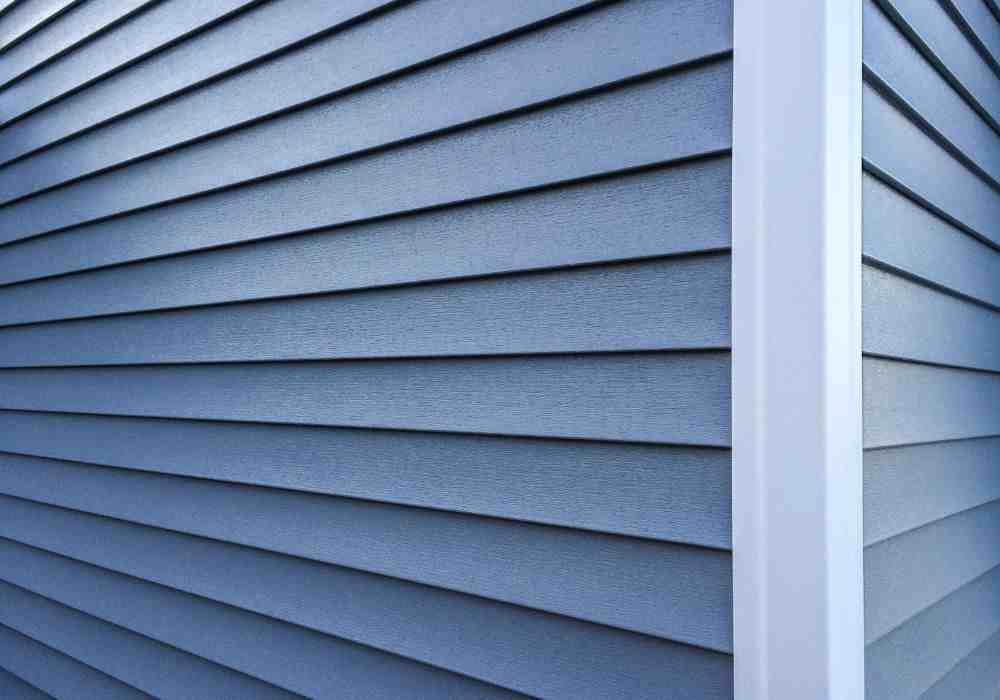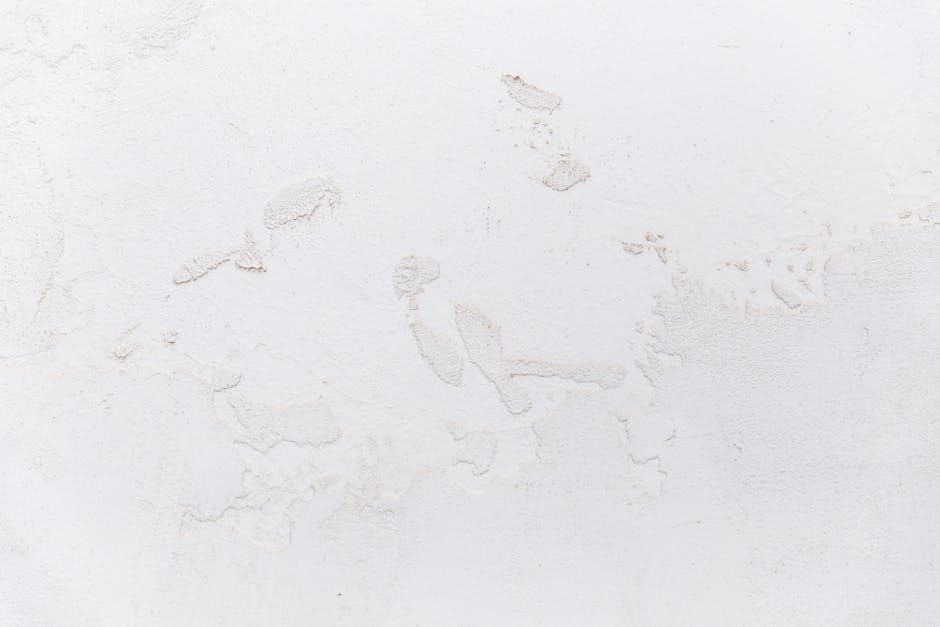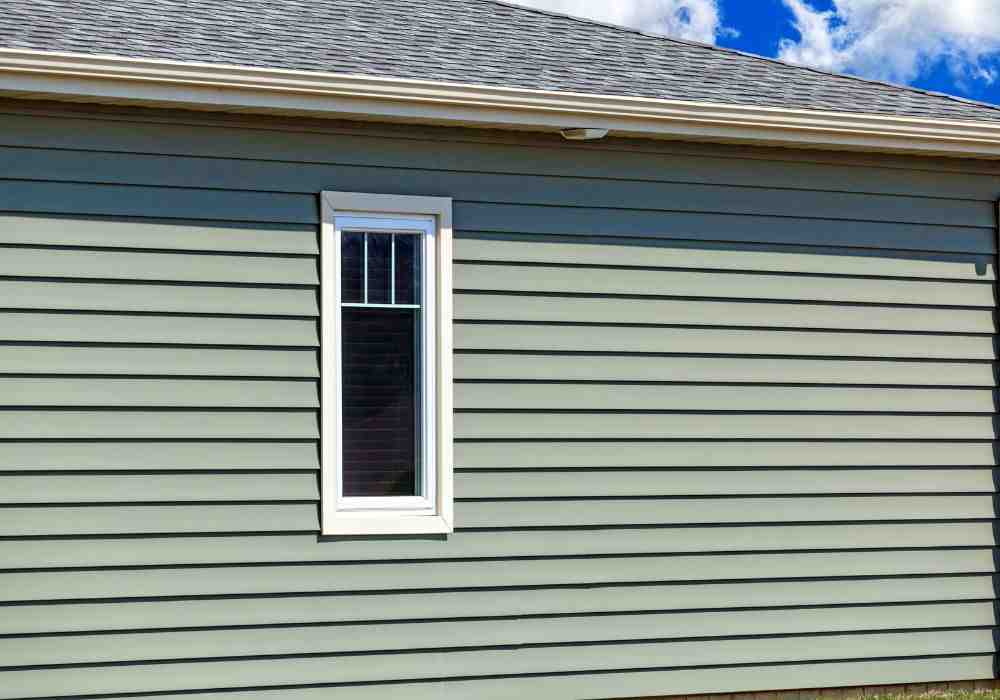The Essential Guide to Choosing the Right Exterior Siding for Your Home
Exterior siding is a crucial part of your home’s appearance and protection. It not only improves your curb appeal but also shields your home from harsh weather conditions.
To address your immediate search intent, here are the key benefits of exterior siding:
- Improved Curb Appeal: Fresh siding updates your home’s look.
- Protection: Shields from moisture, pests, and the elements.
- Energy Efficiency: Modern siding options can reduce energy bills.
Choosing the right exterior siding is more than just a cosmetic decision. The right siding material can transform the look of your home, adding significant value and making it more visually appealing. Additionally, it also plays a critical role in protecting your home. Siding acts as a barrier against weather elements like rain, wind, and snow, helping to prevent moisture intrusion, rot, and pest infestations.
I’m Kevin McLaughlin, owner of Heritage Exteriors LLC. With years of expertise in installing and maintaining exterior siding, my team and I are dedicated to enhancing your home’s beauty and durability.
Next, we’ll explore the various types of exterior siding to help you make an informed decision.
Types of Exterior Siding
Vinyl Siding
Vinyl siding is one of the most popular choices for homeowners due to its affordability and low maintenance. Made from polyvinyl chloride (PVC), vinyl siding is durable and can withstand weather elements like rain and wind. It’s available in a wide variety of colors and textures, allowing you to customize the look of your home easily.
Key Benefits:
– Cost-Effective: Vinyl siding is one of the most budget-friendly options, costing between $4 to $5 per square foot on average.
– Low Maintenance: Simply wash it with a garden hose to keep it clean. No need for painting or caulking.
– Versatility: Available in styles that mimic wood, stone, and other natural materials.
Maintenance Tips:
– Wash with a garden hose and mild detergent.
– Avoid using high-pressure washers unless specified by the manufacturer.
– If painting, use exterior latex paint and choose a color no darker than the original to avoid warping.
Wood Siding
Wood siding offers an authentic look that many homeowners find appealing. Available in various types like cedar, pine, and redwood, it adds a natural charm to your home. However, wood siding requires regular maintenance to prevent issues like rot and insect damage.
Key Benefits:
– Aesthetic Appeal: Provides a classic, timeless look.
– Variety of Finishes: Can be stained or painted in numerous shades.
– Durability: With proper care, wood siding can last up to 30 years.
Maintenance Tips:
– Regularly wash with a power washer.
– Repaint or restain every few years to maintain its appearance and protect against the elements.
– Inspect for signs of rot or insect damage and treat as needed.
Fiber Cement Siding
Fiber cement siding is a great option if you’re looking for durability and resistance to weather and pests. Brands like James Hardie offer fiber cement siding that mimics the look of wood or stucco but with added benefits.
Key Benefits:
– Durability: Lasts 25 to 50 years depending on the manufacturer.
– Fire and Termite Resistant: Offers excellent protection against these threats.
– Versatile Appearance: Available in various styles and textures.
Maintenance Tips:
– Clean annually with a garden hose and soft brush.
– Repaint every 10-15 years to maintain appearance and protection.
– Inspect caulking around windows and doors and reapply as needed.
Brick Siding
Brick siding provides a classic look that never goes out of style. It’s highly durable and can last the lifetime of your home with minimal maintenance. Brick is also resistant to weather and pests, making it a solid choice for many homeowners.
Key Benefits:
– Longevity: Can last the lifetime of your home.
– Low Maintenance: Requires minimal upkeep.
– Weather and Pest Resistant: Offers excellent protection against the elements and pests.
Maintenance Tips:
– Inspect for any cracks or damage and repair as needed.
– Clean with a garden hose and mild detergent.
Stone Veneer
Stone veneer siding offers the natural appearance of stone but is more lightweight and easier to install. It comes in both natural and synthetic materials, providing a cost-effective way to improve your home’s curb appeal.
Key Benefits:
– Natural Look: Mimics the beauty of natural stone.
– Lightweight: Easier to install compared to real stone.
– Cost-Effective: Less expensive than natural stone, costing between $10 to $30 per square foot installed.
Maintenance Tips:
– Clean annually with a garden hose.
– Inspect for any loose or damaged pieces and repair as needed.
Engineered Wood Siding
Engineered wood siding is a composite material designed to mimic the look of real wood while offering greater durability and resistance to elements. It’s made by binding wood fibers with resins and other agents.
Key Benefits:
– Cost-Effective: Less expensive than traditional wood siding.
– Durability: More resistant to insects and rot compared to natural wood.
– Eco-Friendly: Often made from recycled materials.
Maintenance Tips:
– Clean with a garden hose and mild detergent.
– Repaint or restain as needed to maintain appearance and protection.
Stucco Siding
Stucco siding offers a traditional look commonly found on Mediterranean and Spanish-mission homes. Made from sand, cement, lime, and water, it’s applied over a metal screening and a waterproof barrier.
Key Benefits:
– Durability: Can last the lifetime of the house with proper care.
– Weather Resistant: Provides excellent protection against the elements.
– Low Maintenance: Requires minimal upkeep once installed.
Maintenance Tips:
– Inspect for any cracks and repair promptly.
– Clean with a garden hose and mild detergent.
Each type of exterior siding offers unique benefits and considerations. Next, we’ll discuss the factors to consider when choosing the best siding for your home.
Factors to Consider When Choosing Exterior Siding
Choosing the right exterior siding for your home involves more than just picking a color you like. You need to consider several key factors: energy efficiency, ease of installation, versatility, and cost. Let’s break these down.
Energy Efficiency
Energy efficiency is crucial for keeping your home comfortable and your energy bills low. While siding alone doesn’t provide much insulation, you can choose insulated versions or add siding insulation.
- Insulated Siding: Adding insulation can reduce heating and cooling costs by up to 20%.
- Impact on Heating and Cooling: Proper insulation keeps your home cool in the summer and warm in the winter.
Fact: According to EnergyStar, heat gain and loss through windows are responsible for 25%–30% of residential heating and cooling energy use. Insulated siding can help mitigate this.
Ease of Installation
The ease of installation varies by siding type. Some are DIY-friendly, while others require professional installation.
- DIY-Friendly Options: Vinyl and wood siding are lightweight and straightforward to install.
- Professional Installation: Fiber cement siding is heavier and can crack if mishandled, making professional installation a safer choice.
Tip: Always follow the manufacturer’s instructions to avoid voiding the warranty.
Versatility
Versatility in siding means being able to install it in different orientations and customize its appearance.
- Horizontal vs. Vertical Installation: Vinyl, engineered wood, and fiber cement siding can be installed both horizontally and vertically.
- Customization Options: Many sidings come in a variety of colors and textures, allowing you to mimic the look of wood, stone, or brick.
Case Study: One homeowner faced repeated pest infestations due to deteriorating wood siding. After replacing it with fiber cement siding, the pest issues stopped.
Cost
Cost is always a significant factor, but it’s essential to consider both the upfront expense and long-term value.
- Budget Considerations: Vinyl siding is one of the most affordable options, costing between $6,150 and $15,900 for a typical single-family home. Wood siding can range from $7,000 to $23,000.
- Long-Term Value: While some materials may have a higher upfront cost, their durability and low maintenance can save you money in the long run.
Example: Fiber cement siding is more expensive initially but is resistant to pests and weather, reducing future repair costs.
By considering these factors, you can make an informed decision that balances your needs and budget. Next, we’ll dive into the maintenance and repair of exterior siding to help you keep your home looking its best.
Maintenance and Repair of Exterior Siding
Vinyl Siding Maintenance
Cleaning: Vinyl siding is low-maintenance and easy to clean. For routine cleaning, use a garden hose to rinse off dirt and debris. For tougher stains, a long-handled car-washing brush and a mild detergent will do the trick. Avoid spraying water into cracks or under the siding to prevent moisture buildup.
Painting: Although vinyl siding doesn’t need painting, you can paint it if you want a new look. Use an exterior latex paint labeled for vinyl siding. Choose a color no darker than the original to avoid warping. Ensure the siding is clean and dry before painting. If the surface is pitted, apply a vinyl-safe primer first.
Repairing Damaged Panels: To repair broken or melted vinyl siding, you’ll usually need to replace the damaged panels. A vinyl open uping tool, also known as a zip-lock tool, helps you separate and attach adjacent panels. Follow the manufacturer’s instructions for installation.
Wood Siding Maintenance
Cleaning: Wood siding requires regular cleaning to prevent mold and mildew. Use a garden hose and a soft brush with a mild detergent to clean the surface. Avoid using high-pressure washers as they can damage the wood.
Sealing, Painting, or Staining: Wood siding needs sealing, painting, or staining to protect it from the elements. Reapply a sealant every few years to keep the wood in good condition. If painting, use a high-quality exterior paint and follow the manufacturer’s guidelines.
Repair Methods: Repairing wood siding involves replacing rotten or damaged boards. Cut out the damaged section and replace it with a new piece of wood. Make sure to prime and paint or stain the new board to match the rest of the siding.
Fiber Cement Siding Maintenance
Cleaning: Fiber cement siding is durable but still needs occasional cleaning. Use a garden hose and a soft brush to remove dirt and debris. Avoid using high-pressure washers as they can damage the siding.
Repainting: Fiber cement siding can be repainted every 10-15 years. Use high-quality exterior paint and follow the manufacturer’s guidelines. Clean and dry the surface thoroughly before painting.
Caulking: Inspect the caulk around windows and doors annually. Reapply caulk where needed to prevent moisture from seeping in and causing damage.
Repair Techniques: To repair damaged fiber cement siding, remove the damaged section and replace it with a new piece. Follow the manufacturer’s installation instructions to ensure a proper fit and finish.
Maintaining your exterior siding not only keeps your home looking great but also extends the life of the siding. Next, we’ll address some frequently asked questions about exterior siding to help you make the best choices for your home.
Frequently Asked Questions about Exterior Siding
What is the best type of exterior siding?
Choosing the “best” type of exterior siding depends on your specific needs and preferences.
Vinyl siding is popular for its affordability and low maintenance. It’s available in many colors and textures, making it versatile for different home styles.
Fiber cement siding offers excellent durability and resistance to weather and pests. It’s a great option if you want something long-lasting and low-maintenance.
Wood siding provides an authentic, classic look but requires regular maintenance to prevent rot and insect damage.
Stucco siding is very resilient and can last over 50 years with proper maintenance. It’s also fire-resistant and versatile in terms of texture and color.
What is the cheapest exterior siding?
Vinyl siding is generally the most affordable option, costing between $4 to $5 per square foot on average. This makes it a budget-friendly choice for homeowners who want a durable and low-maintenance exterior.
Another cost-effective option is composite siding, which mimics the look of wood but requires less maintenance and is more durable.
What is the longest-lasting siding?
Fiber cement siding and stucco siding are among the longest-lasting types of exterior siding.
Fiber cement can last up to 50 years without significant problems. It offers top-notch protection against harsh weather conditions and requires minimal maintenance.
Stucco siding, when properly maintained, can also last over 50 years. It’s resistant to mold, rot, and mildew, and can expand and contract with the weather to prevent critical damage.
Manufactured siding made from high-density fiberboard (HDF) is another durable option, known for its water and fire resistance.
By understanding these key aspects, you can make informed decisions when choosing the right exterior siding for your home. Now, let’s move on to the conclusion, summarizing the key points and the importance of professional consultation.
Conclusion
Choosing the right exterior siding for your home is crucial. It not only improves curb appeal but also protects your home from the elements. Let’s recap the key points:
- Vinyl siding is affordable and low-maintenance, available in a variety of colors and textures.
- Wood siding offers an authentic look but requires regular maintenance.
- Fiber cement siding is durable and resistant to weather and pests, with options like James Hardie siding.
- Brick siding provides a classic look and is highly durable.
- Stone veneer gives a natural appearance and is lightweight and easy to install.
When selecting siding, consider factors like energy efficiency, ease of installation, versatility, and cost. Each material has its own set of benefits and maintenance requirements.
At Heritage Exteriors LLC, we specialize in a variety of siding materials to meet your needs. Our team is dedicated to providing top-quality siding replacement services that not only beautify your home but also protect it for years to come.
Why choose us?
- Expertise: Our team has experience in siding installation and replacement.
- Quality Workmanship: We pride ourselves on delivering high-quality results.
- Customer Satisfaction: Our goal is to exceed your expectations and ensure your home is both beautiful and durable.
Professional consultation is essential when it comes to siding installation. A professional can help you choose the best material for your home, ensuring proper installation and long-term performance.
Ready to transform your home’s exterior? Schedule a free consultation with one of our siding experts today. Let’s discuss your options and find the perfect siding solution for your home.








